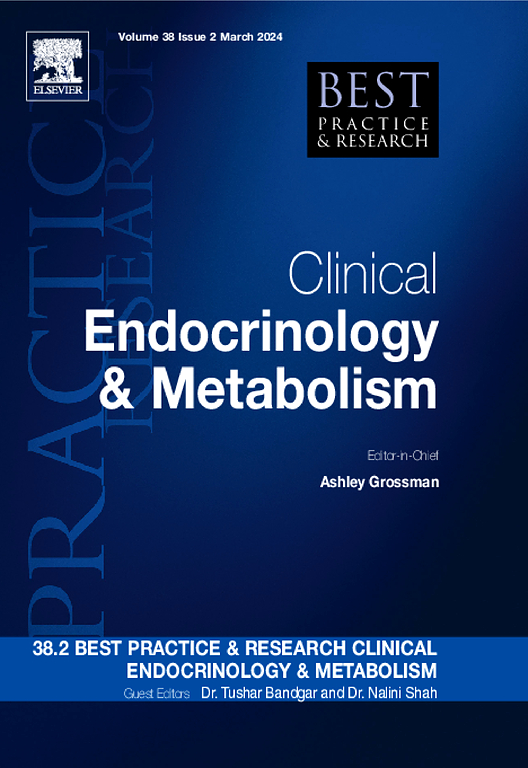人类NR5A1/SF1变异的更广泛影响和结果
IF 6.1
1区 医学
Q1 ENDOCRINOLOGY & METABOLISM
Best practice & research. Clinical endocrinology & metabolism
Pub Date : 2025-07-01
DOI:10.1016/j.beem.2025.102023
引用次数: 0
摘要
核受体亚家族5A组1号成员,也被称为甾体生成因子1 (NR5A1/SF-1),在人类性发育和甾体生成中起着至关重要的作用。NR5A1基因的致病性变异是性别发育(DSD)和原发性卵巢功能不全的46,XY和46,XX差异的确定原因。虽然许多研究已经证明这些变异会损害青春期和生育能力,但在受影响的个体中,青春期和生殖的全部影响仍然难以确定。新出现的证据表明,不仅在DSD患者中,而且在普通人群中无症状的NR5A1/SF-1变异携带者中,DSD对性腺功能之外的更广泛、更长期的影响,包括对脾脏功能和代谢健康的影响。然而,这些发现需要通过更大规模的纵向研究来验证。这篇综述提供了当前知识和现有差距的全面概述,强调了NR5A1/SF-1变异的更广泛的影响和长期影响。本文章由计算机程序翻译,如有差异,请以英文原文为准。
Broader impact and outcome of human NR5A1/SF1 variants
Nuclear Receptor Subfamily 5 Group A Member 1, also known as Steroidogenic Factor 1 (NR5A1/SF-1), plays a crucial role in human sex development and steroidogenesis. Pathogenic variants in the NR5A1 gene are well-established causes of 46,XY and 46,XX differences in sex development (DSD) and primary ovarian insufficiency. While numerous studies have demonstrated that these variants impair puberty and fertility, the full spectrum of pubertal and reproductive effects in affected individuals remains difficult to define. Emerging evidence suggests broader, long-term implications beyond gonadal function, including effects on spleen function and metabolic health, not only in individuals with DSD, but also in asymptomatic carriers of NR5A1/SF-1 variants within the general population. However, these findings require validation through larger, longitudinal studies. This review provides a comprehensive overview of current knowledge and existing gaps, emphasizing the broader impact and long-term effects of NR5A1/SF-1 variants.
求助全文
通过发布文献求助,成功后即可免费获取论文全文。
去求助
来源期刊
CiteScore
11.90
自引率
0.00%
发文量
77
审稿时长
6-12 weeks
期刊介绍:
Best Practice & Research Clinical Endocrinology & Metabolism is a serial publication that integrates the latest original research findings into evidence-based review articles. These articles aim to address key clinical issues related to diagnosis, treatment, and patient management.
Each issue adopts a problem-oriented approach, focusing on key questions and clearly outlining what is known while identifying areas for future research. Practical management strategies are described to facilitate application to individual patients. The series targets physicians in practice or training.

 求助内容:
求助内容: 应助结果提醒方式:
应助结果提醒方式:


